Rapid additive fabrication – otherwise known as 3D printing – has come into its maturity as of late. The paradigm-shifting technology can now be harnessed in every type of naturally extracted and manufactured material. The limited formal constraints of long-established production techniques like molding have been thrown out the window. Brooklyn-based Ukrainian polymath Renata G., founder of MIOS (Made in Our Studio), has added her voice to this ever-progressing revolution.
Tapping into her implicit understanding of materiality – her extensive training in painting and sculpture – she creates bespoke luminaires by modeling and then 3D printing complex structural patterns in ceramic. The sculptural, amorphous forms are then finished using the traditional procedures of glazing and kiln-firing. They are then wired with lighting fixtures.
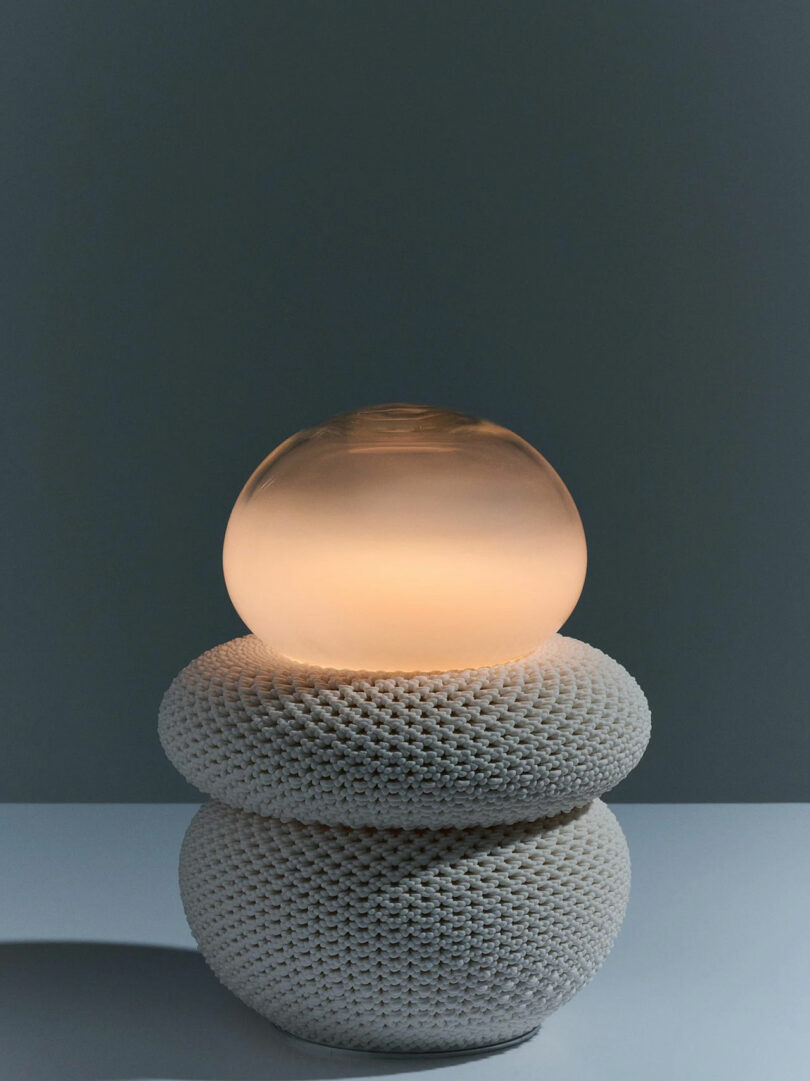
The melding of these seemingly disparate methodologies has led her to formulate a compelling approach all her own; a strategy that doesn’t allow one procedure to supersede the other. Rather, they’re implemented as tools; means to other ends. G’s designs aren’t mere gaudy demonstrations of a new technology but rather transcendent expressions rendered in functional and semi-functional form.
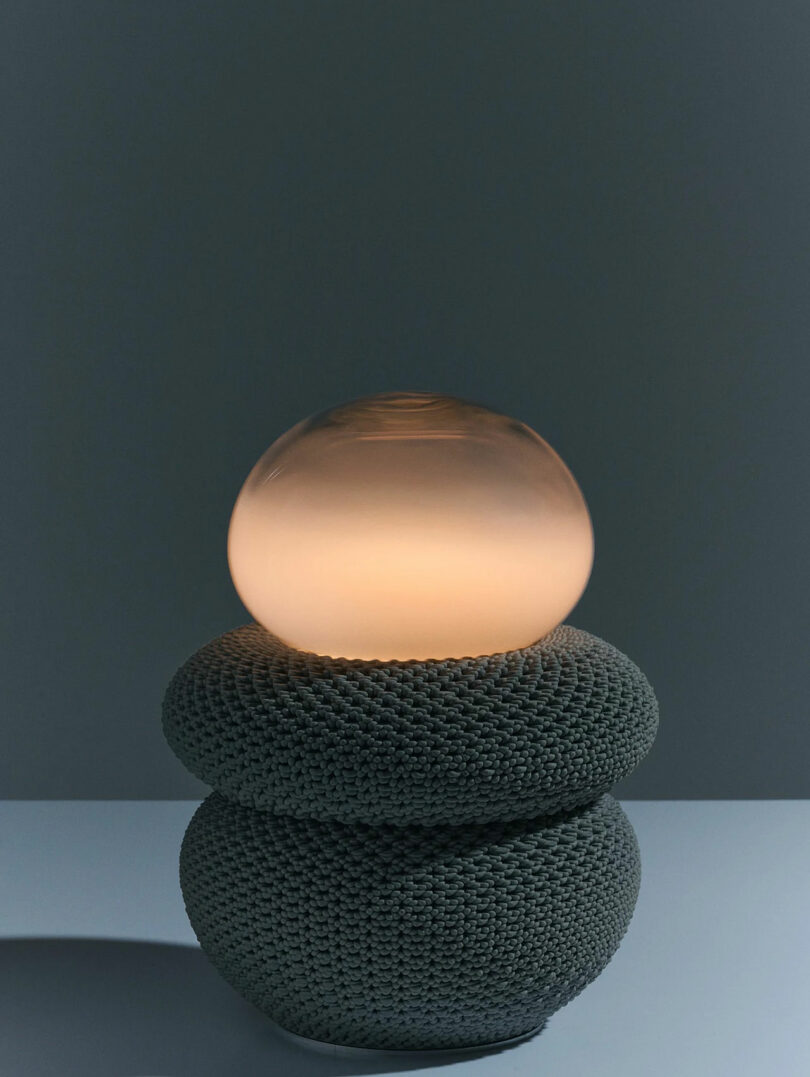
For New York-based MIOS, G and her collaborators propagate the New Mid Century aesthetic; riffing on the still pervasive influence of MCM design by introducing the notions of “digital craft, sculptural clarity, and a commitment to process.”
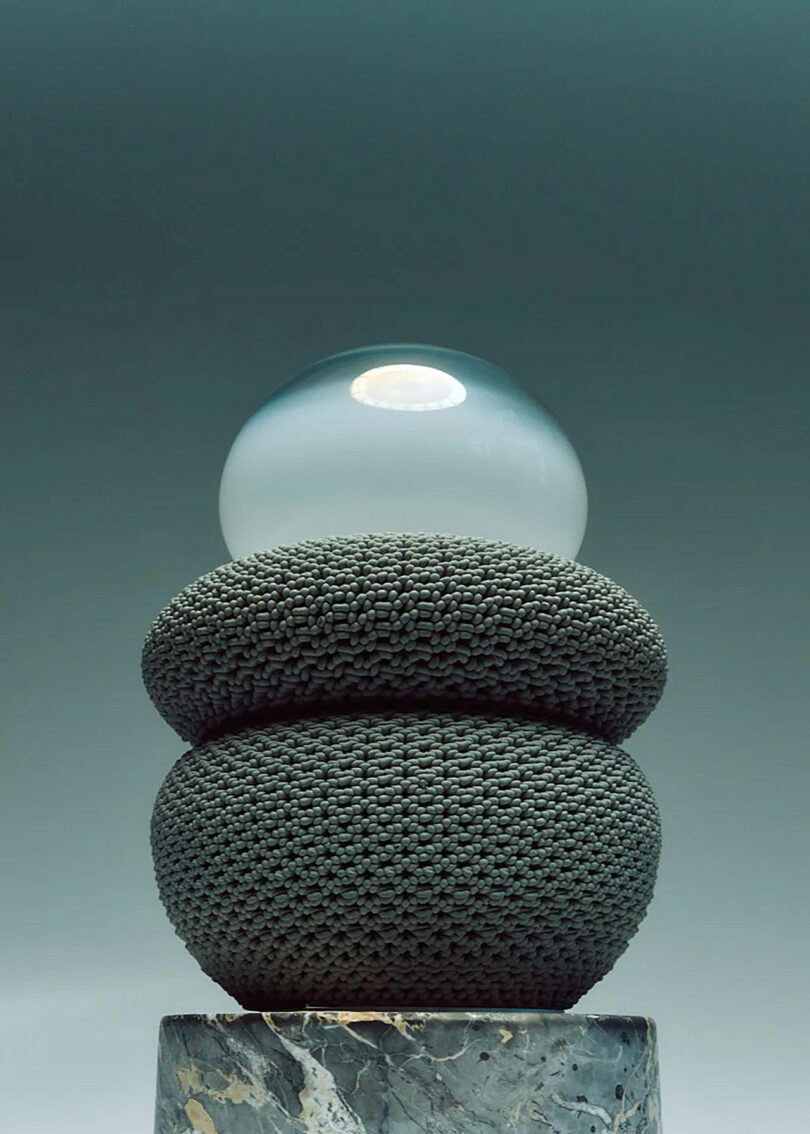
Undeniably, this proposition has required a lot of trial and error; experimenting with the inherent properties of porcelain and stoneware and uncovering the unexpected potential of these long-extracted materials. The resulting vessels-like applications challenge the conventions of their nature and application; the commonly held assumption that porcelain is fragile and stoneware is clumsily unrefined.
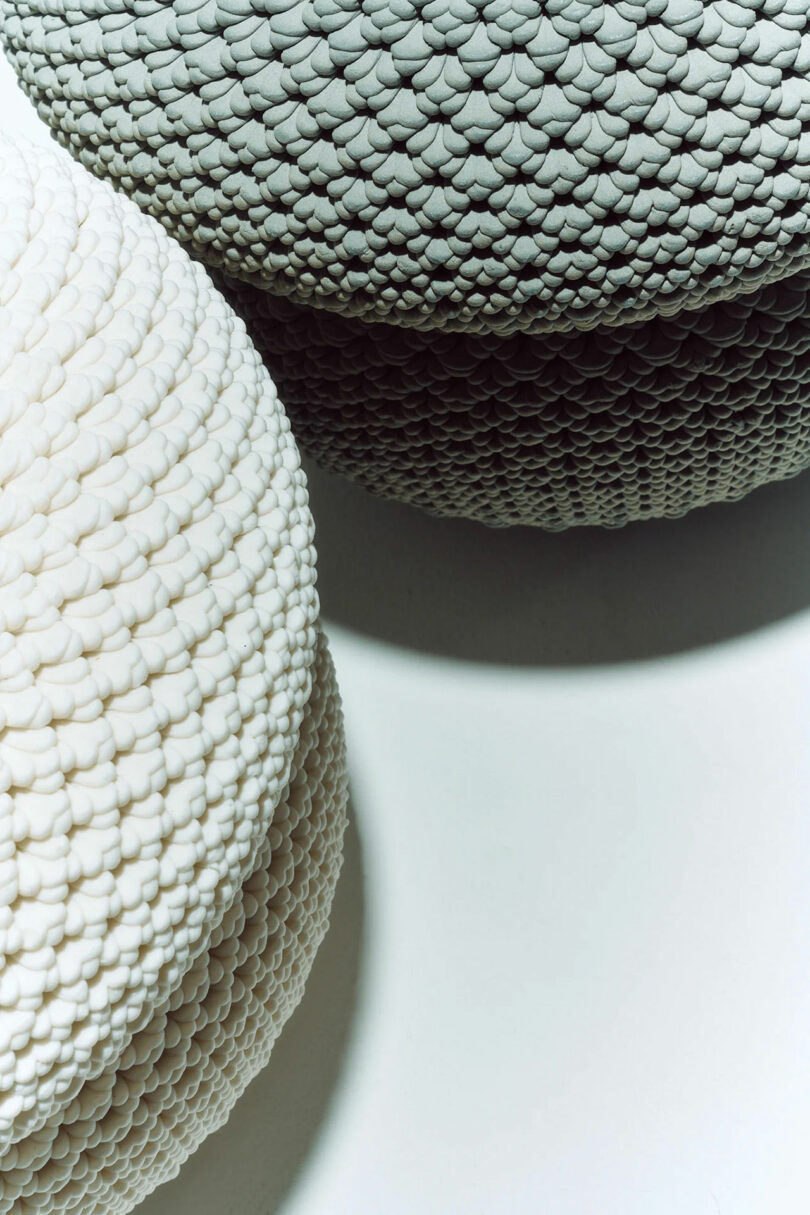
As evident in the UNI Lamp series, ceramics can be channelized into especially intricate and repetitional motifs – almost like woven fiber. It has the intrinsic tensile integrity to form into mesh patterns – not through the manipulation of the human hand however but through the careful calibration of 3D printers. As a result, G has gained a deeper understanding of what’s possible and what’s not in this regard; how far the material can actually be pushed outside of its element.
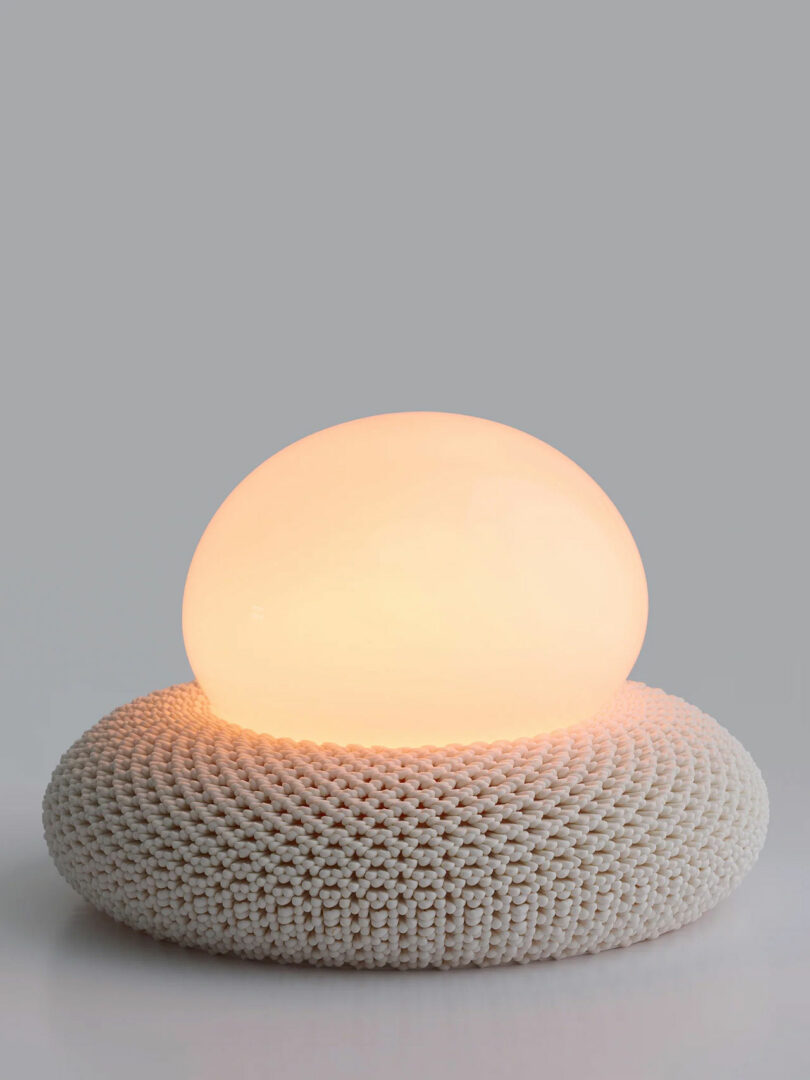
Almost like a tube of billowing fabric, these seemingly soft but actually solidified objects anchor hand-blown glass “bulbs” – equally elliptical – emitting diffused light. The collection has been iterated upon especially when it comes to tone and texture but also composition.
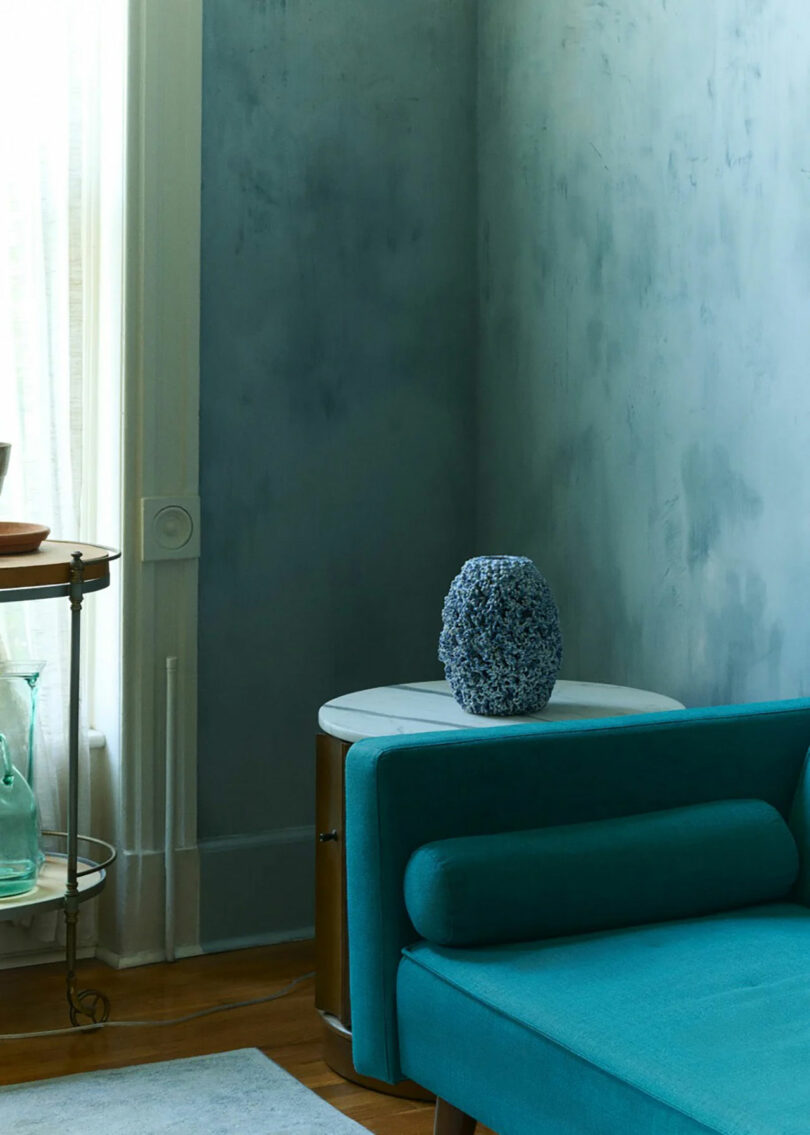
Through MIOS, G has also developed accumulative, coiled, and tufted textile-like surface treatments as well. Developed into various scales, the High Pile collection coheres all three conditions. A gentle application of blue glaze on the final layer is the visual, almost trompe-l’oeil, effect that allows these objects to resemble French Toile motifs.
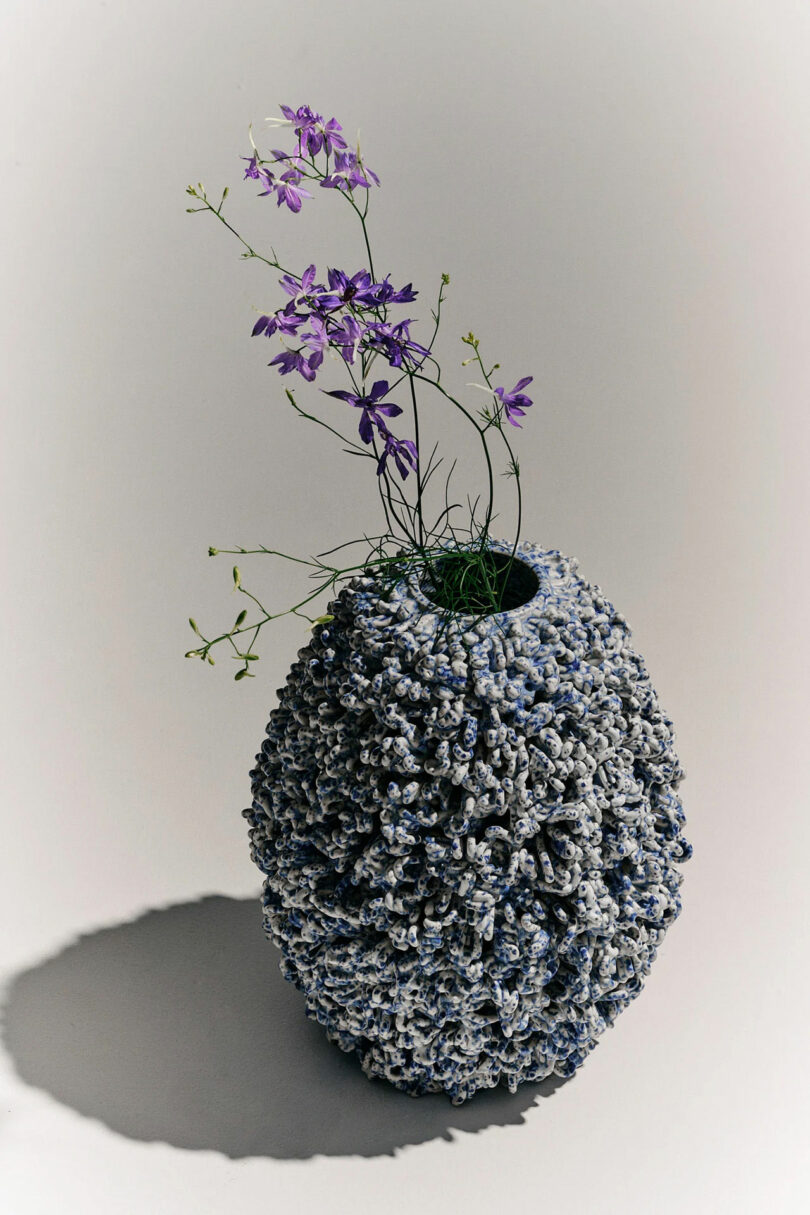
Processed through the latest 3D-printing technology, clay can in fact take on the qualities of textile and to almost baffling effect as three-dimensional objects. There’s plenty of room for G and her collaborators to further explore and refine this paradigm.
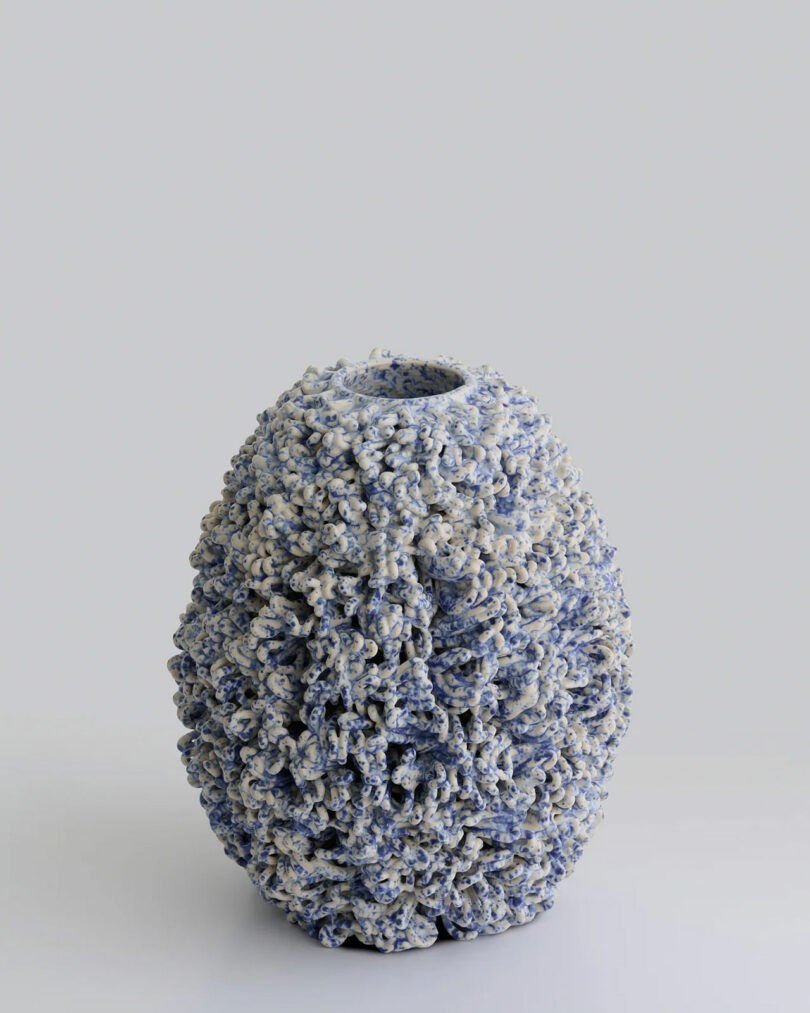
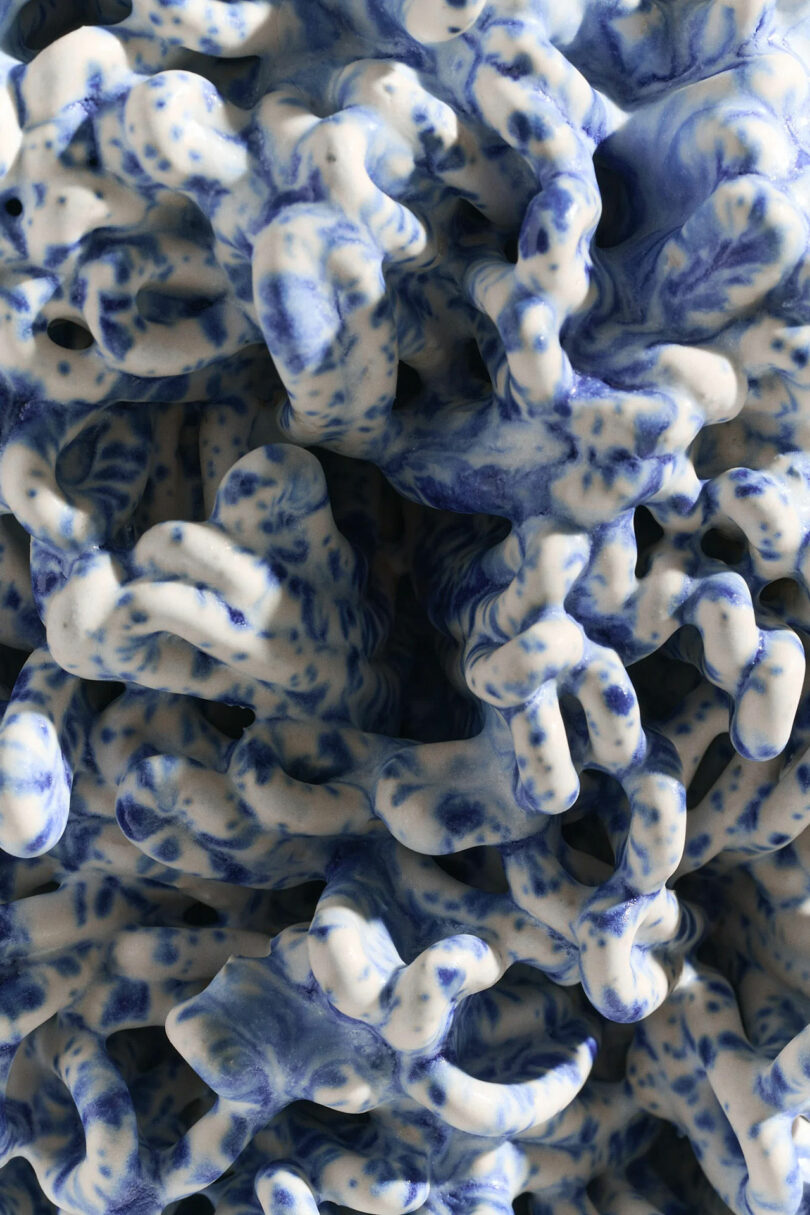
American sociologist Richard Sennett often talks about innovation resulting from adjacency; the “throwing together” of two seemingly disparate materials, processes, or applications. MIOS’s UNI Lamp and High Pile collections are strong examples of this fundamental observation.
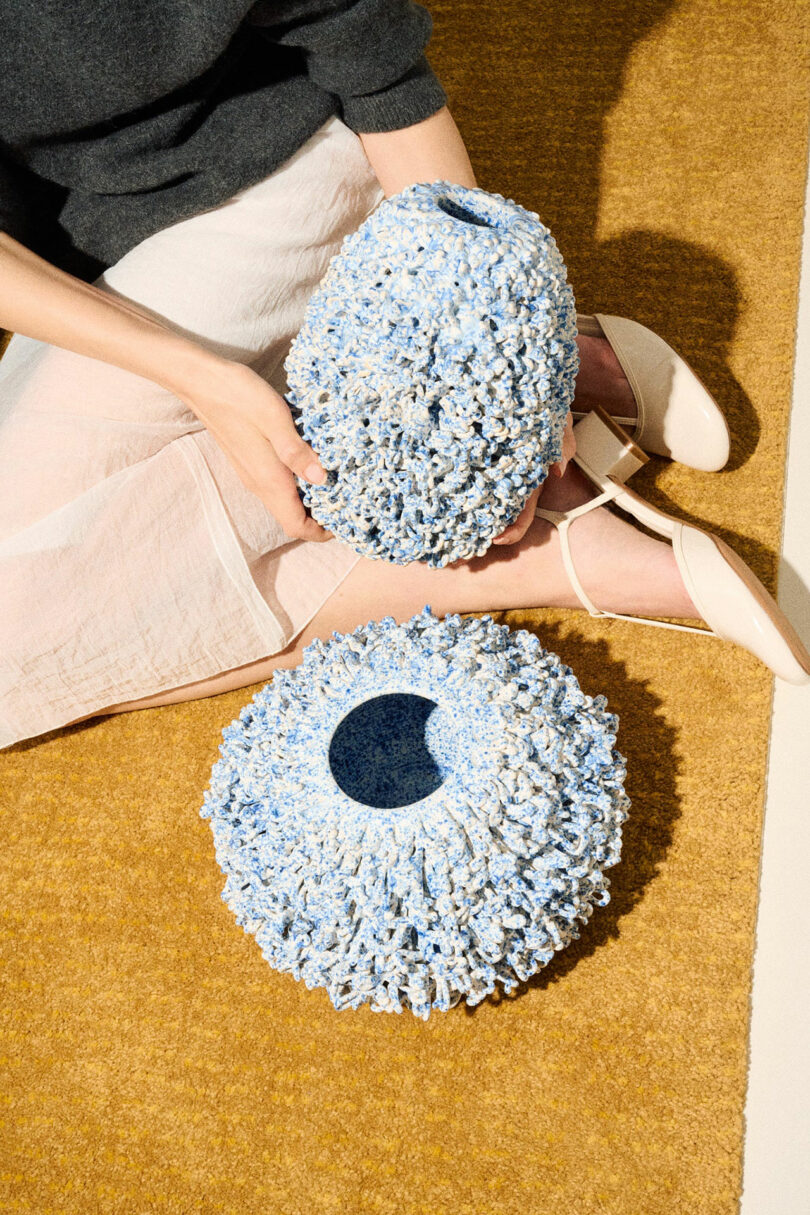
To learn more about MIOS’s UNI Lamp and High Pile collection, please visit miosnewyork.com.
Photography courtesy of MIOS.

